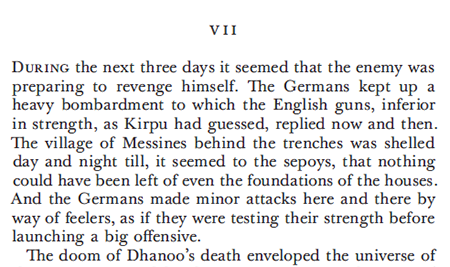Someone asked a question today on Facebook, in an editing group, about a particular use of ellipsis points. The question had to do with whether there should be space before or after the ellipsis in that situation. The details of the question don't matter, but the question exposed a common fallacy.
People (and by people, I mean specifically authors and copyeditors) often confuse punctuation conventions with composition conventions. I want to take a moment to go back to first principles.
Punctuation is part of our writing system. While the marks and their uses have evolved over time, they predate printing, and their modern forms predate the typewriter, which was introduced in the latter part of the 19th c. There are only a few marks of punctuation, and you can write them all with a pen easily enough. So, purely from the writer's point of view, you can space your three dots any way you please.
Among the latter were dot leaders, the rows of dots typically used in a table of contents or in various other sorts of tables. These were styled in a few different ways. They might be spaced one em apart (an em is a square of type of the point size being used). Those were called one-em dot leaders. They might be spaced two to the em (two-em dot leaders). And they might be spaced three to the em (three-em dot leaders).
When digital fonts and desktop publishing were being developed, computer programmers went to compositors to learn about typesetting. Somewhere, in some conversation, someone confused the three-em dot leader (…) with ellipsis points (. . .), which traditionally were spaced dots. That error became embodied in the Unicode standard, and the name of … is officially the horizontal ellipsis. However, traditional typesetters don't see it that way, and most professional compositors, to this day, will replace it with evenly spaced points that are also spaced, by the same amount, from surrounding text.
They will do this, if they are conscientious and detail-oriented, regardless of how the author and copyeditor have formatted the ellipses in the manuscript. The author is responsible for indicating the desired punctuation (an ellipsis), not for knowing composition conventions. The copyeditor, who probably ought to know something about composition but in many cases doesn't, should not get tied up in knots about whether there is a space before the …, after it, or both but should let the compositor take care of that detail.
I hasten to add that many books are produced by graphic designers who know less about composition best practices than most copyeditors. So practices have to be adjusted to circumstances. But in the ideal world, publishers would hire skilled compositors to set the type instead of relying on graphic designers.
They will do this, if they are conscientious and detail-oriented, regardless of how the author and copyeditor have formatted the ellipses in the manuscript. The author is responsible for indicating the desired punctuation (an ellipsis), not for knowing composition conventions. The copyeditor, who probably ought to know something about composition but in many cases doesn't, should not get tied up in knots about whether there is a space before the …, after it, or both but should let the compositor take care of that detail.
I hasten to add that many books are produced by graphic designers who know less about composition best practices than most copyeditors. So practices have to be adjusted to circumstances. But in the ideal world, publishers would hire skilled compositors to set the type instead of relying on graphic designers.








